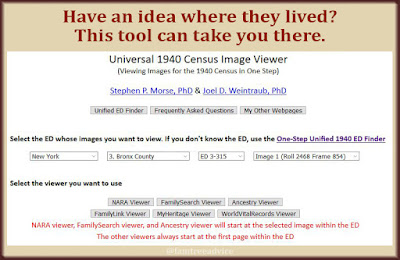This is the next best thing to seeing and holding your ancestor's original documents.
You're so wrapped up in your genealogy treasures. And rightly so! You've found proof for all those birth names, birth dates, marriages, and deaths. You've got immigration and naturalization records. You've got military records and census sheets galore.
Then you visit your cousins and have no good way to share the enormous scope of your family history work. What can you do?
The answer is paper. At least, until I invent the family tree hologram. And big paper, at that.
I've lived my life at a computer keyboard since 1982. I prefer to keep every genealogy document in digital form. Named logically, filed logically, and backed up weekly. But sometimes paper is the most powerful way to share the joy of your family tree.
Here's a project that will help you get those cousins excited about your crazy, obsessive, endless hobby.
 |
| An inexpensive paper cutter makes this process so easy, you won't believe it. Notice the 12" ruler at the top for scale. |
This project has just a few steps:
- trim
- tape
- file
You're going to print over-sized documents that your cousins can read. No magnifying glass required. You'll start with your closest relatives—the ones for whom you've found documents.
 |
| You can print across several sheets of paper from certain programs. |
My two grandfathers immigrated to the United States from Italy, so they're a great place for me to start. I can print out full-sized copies of all their major documents:
- ship manifests
- census sheets
- naturalization papers
- military documents
- birth, marriage, and death certificates
To make these big printouts at home, you have a couple of options.
Adobe Acrobat and Microsoft Paint (yes, plain old Paint) let you print your image on multiple sheets of paper. I like Acrobat because it can add "cut marks" that come in handy when you're ready to put the sheets together. In Paint, you can choose how many pages to print to. For example, you might find that 2-pages wide by 2-pages high is a good size. For Mac users, whichever application you use, look for Scale options in the Print dialog. Note: I was able to open a document image in Photoshop and export is as a PDF. This is my best option.
Once you print out your images, a paper cutter is the best tool for trimming off the excess. You can find low-priced paper cutters like this one from Overstock. I bought a similar one a few years ago for $15. They should have some in your local craft or sewing store, too.
Now line up your trimmed sheets, two at a time. You're going to want to tape them together on the back side. Don't skimp on the tape. It's going to form a very convenient fold-line for storing your oversized document.
These big documents are very impressive, and so much easier to read than a shrunken down version.
 |
| An accordion folder is an easy way to carry a huge number of big documents to your next family gathering. |
Print and assemble all the documents you like for a particular ancestor. Then fold them down, clip them together, and put them into an accordion folder. Fill your accordion folder with documents and bring it with you the next time you visit your relatives.
I dare your cousins not to light up at the sight of these big, old-timey documents with their ancestor's name on them!
And speaking of showing off your family tree:





